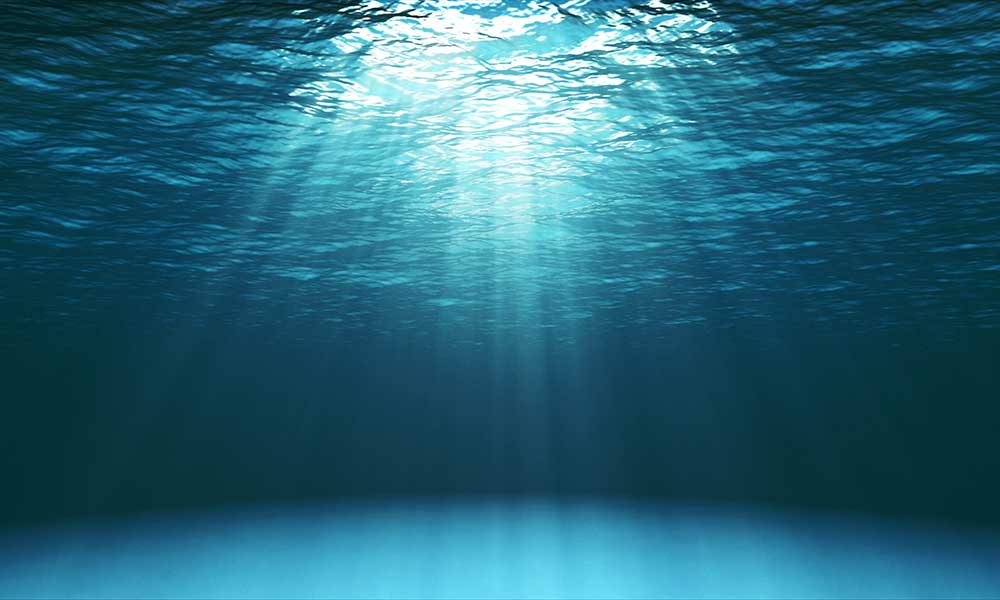One day, the water is warm. You’re surfing in boardshorts or a bikini.
You show up the next day expecting similar water temperatures only to be met with numbing-cold water.
You hope to have your wetsuit in the trunk of your car because you just experienced upwelling.
The Definition of Upwelling
So, what is ocean upwelling?
Upwelling is a common occurrence in the ocean when the deep water that is rich in nutrients rises close to the surface.
Upwelling is caused by high-pressure systems in the ocean at specific times of the year.
It replaces water that is warmer and is depleted of nutrients.
This process is often controlled by the winds as water is pushed away from the shore.
This leaves behind crabs that are in their shells as the water fertilizes the surface water.
It also helps encourage the growth of the plant life to ensure it is lush and healthy due to the nutrients that are delivered from the deep water.
The process helps plankton and seaweed to grow and thrive.
Upwelling also takes place when events occur with the geological features on the floor of the ocean.
When currents have contact with seamounts, it forces the water to move upward, leading to a lot more productivity in areas where mounts are present.
What Causes Upwelling?
Upwelling occurs when strong polar winds blow across the surface of the water.
The different factors that affect upwelling include the strength of the winds.
The winds must be strong and there must be deep water limits present for this phenomenon to occur.
There are times when upwelling can lead to negative effects when it lowers oxygen levels, raises turbulence, increases ocean acidification, and disrupts feeding.
Lower oxygen levels start to affect different animals in the water as the acidification has a negative impact on their ability to thrive and stay healthy.
Where Does Upwelling Occur?
Upwelling commonly occurs in the open oceans and near the coastlines in different parts of the world.
Upwelling zones are located on the west coasts of Africa and South America with coastal upwelling that occurs year-round.
Upwelling and downwelling also occur on a seasonal basis on the west coast of the U.S. Off Northwest Africa, the Canary Current is a common place where this takes place.
Other locations include the Benguela Current near south Africa and the California Current near Oregon and California.
Off Peru and Chili, the Humboldt Current is one of the most common areas in the world where upwelling is present year-round. Peru is known for its rich fishing community as the winds blow north.
Off Somalia and Oman, the Somali Current is present.
Many people are surprised to learn upwelling also occurs near the Equator.
This is due to trade winds that blow the surface water north and south, causing deeper water to rise.
When Does Upwelling Occur?
Upwelling commonly occurs in the spring and summer seasons when the winds are stronger each year.
It typically occurs at a rate of 15 to 30 feet each day, but it depends on the strength of the wind and the climate.
The combination of the winds and the rotation of the earth causes upwelling as the earth rotates on its axis from the east to the west.
This leads to good fishing grounds and has a positive impact on the fishing industry.
Downwelling can also occur when the surface water starts to build up near the coastline as it begins to sink towards the bottom of the ocean.
This is a common occurrence when the winds start to shift in the opposite direction.
Why Is Upwelling Important To Marine Life?
One of the main occurrences of upwelling is how it affects marine life.
Because less nutrient-rich water is present deep within the ocean, it causes there to be less fish present.
There’s typically a lot of movement in the animal life in the area.
If upwelling didn’t occur, it would affect the fish population and how many species are present in the water.
The fish would die off more over time.
Upwelling is good for marine life because it allows them to have more access to food, benefitting fish, birds, and different types of mammals.
It is known to promote some of the most fertile ecosystems in the world.
How Does Upwelling Affect The Climate?
The heat budget of the earth is significantly affected by upwelling.
When upwelling occurs in the tropics near the eastern equatorial regions, it causes a cooling effect.
This can even lead to global warming shifts with the circulation of the global atmosphere.
A lot of upwelling variability takes place with El Niño Southern Oscillation.
Does El Nino Affect Upwelling?
Yes, El Nino causes there to be a lot less upwelling present because the winds are weaker.
This causes a lot of fish to die off along the South American coast to Asia and Australia when less water is transported vertically.
Different types of marine life have less access to vital nutrients that are essential for them to thrive.
During El Nino, the warm water is dragged away from the shore as colder water comes up to the surface.
This affects the Peruvian fishing industry and can affect how easy it is to catch fish.
What Comes Up To The Surface With Cold Upwelled Water?
When cooled upwelled water is present, it causes a lot of nitrate and phosphate to come to the surface near the shore due to decaying matter and dead animals that are on the ocean’s floor.
This is essential for the oceanic food chain.
A lot of phytoplankton is present around the Galapagos Islands, allowing many types of fish to have more than enough to eat each season.
This allows there to be rich fishing grounds present.
By studying the different levels of chlorophyll that are present in the water, it makes it easy to view how much productivity is present any time of the year.







